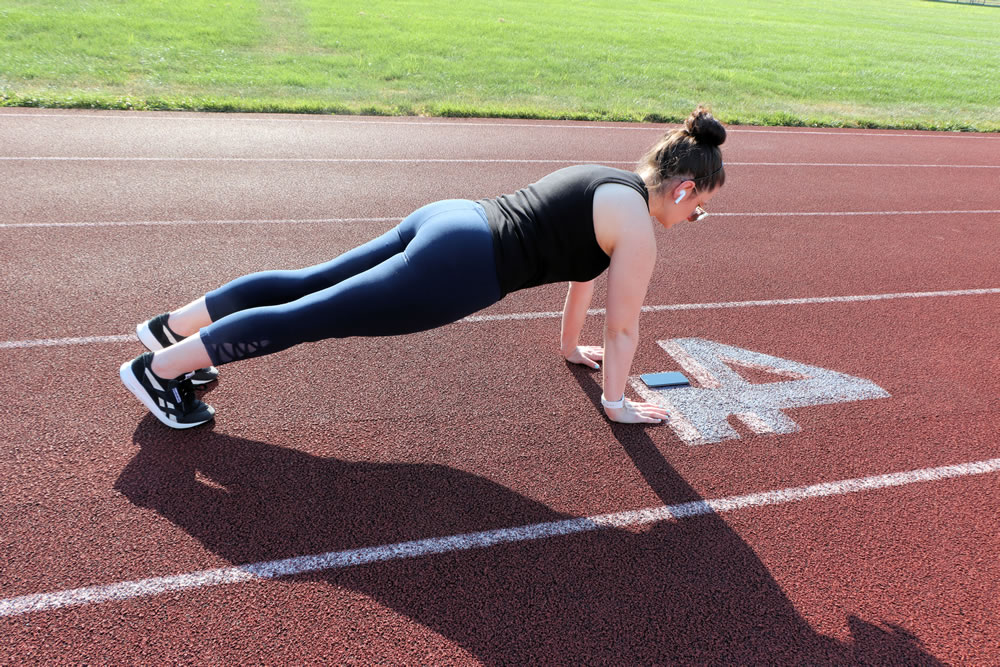How To Start Exercising Again ist die Überschrift der Nachrichten, die der Autor von NachrichtenStar diesen Artikel gesammelt hat. Bleiben Sie auf NachrichtenStar auf dem Laufenden, um die neuesten Nachrichten zu diesem Thema zu erhalten. Wir bitten Sie, uns in sozialen Netzwerken zu folgen.
When life gets hectic, exercise is usually one of the first things to fall to the sidelines. And I’m no stranger to the fact that the longer you put it off, the more frustrating it can be to get back in the groove.
But, if at this very moment you’re stressed, your energy stinks, your favorite jeans don’t fit quite as comfortably as you remember, and you get winded halfway up a flight of stairs, it may be time to lace up those sneakers and get back in shape.
There’s nothing wrong with wanting to tone up and drop some unwanted pounds.
But making exercise and living an active lifestyle can do so many other incredible things for your body and health that many of us take for granted.
You should start exercising again because…
It May Help You Live Longer
The American Heart Association’s journal Circulation, reports that upwards of 250,000 deaths in the United States each year are associated with a sedentary lifestyle and lack of physical activity. [1]
And even a small amount of exercise can provide benefits.
A 2020 study published in the British Journal of Sports Medicine found the lifespans of sedentary people significantly improved after doing just 11 minutes a day of “moderate-to-vigorous” activity. [2]
You’ll Build Muscle and Burn Fat
If you stick with an exercise and strength training program, and you’re eating enough protein, your body will respond by building more muscle to adapt.
More muscle means you’ll get stronger and reduce the risk of injury, but it will also help support your joints, improve bone density, and boost immunity. [3, 4, 5]
Increasing muscle also raises your body’s metabolic rate, encouraging it to burn more fat. [6, 7]
💡 Fit Fact: Per pound, muscle burns 7 to 10 calories daily while fat burns only two to three. So, try to add more muscle with strength training!
It’s Great For Your Heart
Exercising regularly can reduce the risk of type 2 diabetes, which is also a risk factor for heart disease. [8]
Several studies have also shown that exercising regularly can improve cholesterol levels and reduce the risk of cardiovascular diseases like high blood pressure. [ 9, 10, 11]
But it also stimulates “nitric oxide” in the body, which promotes healthy blood pressure by relaxing and expanding blood vessels, allowing blood to flow freely while delivering oxygen and nutrients to our cells. This means your heart doesn’t have to work as hard. [12]
It Will Boost Your Mood and Improve Self-Esteem
Several studies have shown that exercise can help ease anxiety and depression while lowering stress hormones like cortisol that can trigger weight gain. [13, 14]
Research has also shown that exercise can improve sleep quality while also improving focus, productivity, self-confidence, and body image. [15, 16 ]
Exercise increases the health of your body, but it can also improve your sense of well-being, putting more pep in your step every day.
How Long Does it Take to Get Back in Shape?
You can’t put a day and time on when you’ll be fit. It entirely depends on your body, including factors like your age, gender, fitness level, and how often you work out.
If you exercise regularly, you should definitely notice positive changes within 2 to 4 weeks. Stick with it until the 3 to 4-month mark, and you’ll see and feel significant positive changes to your health, fitness, and body. [17]
It’s important to understand that transforming your body takes time, and it doesn’t happen overnight. The fitness models and influencers you see on social media take years to build their bodies. Many even use photo filters.
While exercising may be difficult at first, you will improve. And remember, you can’t out-train a poor diet.
How Often Should I Exercise?
Professional health organizations recommend exercising 150–300 minutes per week of moderate-intensity exercise or 75–150 minutes of vigorous-intensity aerobic activity.
The Mayo Clinic recommends at least 300 minutes to assist with weight loss and to reap the most health benefits. [18]
There’s no reason to do a combination of both. Besides doing cardio like walking, jogging, or cycling, aim to do strength training at least two times per week.
Be sure to add mobility and flexibility movements to help with exercise recovery.

Simple Ways to Start Exercising Again (and Stick With It!)
Use these simple tricks to kick excuses to the curb and finally get fit.
1. Figure Out Why You Stopped Being Active in the First Place
After years of inactivity, I thought I had little time to exercise. But once I analyzed what I was and wasn’t doing, I realized it was poor time management all along.
The demands of school, work, and family can leave us little time for ourselves. But take a day or two and keep track of yourself to see if you can find at least 10 or more extra wasted minutes. The time spent on social media or shopping online can be used to exercise instead.
If time isn’t your issue, maybe you’re discouraged because you didn’t see results from a previous workout program, or it’s okay to admit, maybe you just don’t like to exercise.
Keep reading because we have more tips to help you get over the exercise slump.
If injury or illness has kept you from being active, consult with a doctor or medical professional before starting any exercise program.
2. Ask Yourself Why You Want to Get In Shape
Understanding why you want to get in shape will help motivate you to exercise on those days when your fitness enthusiasm wanes and the excuses roll in.
To get started, grab a notebook, fitness journal, or app on your phone and write out why you want to get in shape.
Healthy “whys” might look like this:
- I want to have more energy to do XYZ.
- I want to change my body composition.
- I want to enter a competition/race/challenge.
- I want to plank for a minute.
- I want to feel better and be healthier.
- I want to feel more confident and have a better body image.
- I want to be stronger
Your answers should not be based on societal expectations, pressure from family or friends, or what you’re seeing on social media.
Wanting to look better fuels many of us to get in shape, but it doesn’t always motivate us to stick with our fitness goals in the long term.
To further motivate you, try to connect your “why” to an emotion.
For example:
- “I want to fit into my favorite dress for my anniversary next year because it will make me feel so happy.”
Or
- “Completing that 5k will give me so much confidence.”
The answers should be personal to you and what you want to achieve. Look back at your answer anytime you want to skip a workout or quit to help motivate you to push through.
3. Lay Out Simple Exercise Goals to Start
You’ve figured out why you want to get in shape. Next, lay out some simple fitness goals you can achieve within a reasonable time frame.
Examples of unrealistic and unhealthy fitness goals:
- Losing 10 pounds in 10 days
- Getting washboard abs in a month
- Getting to 10% body fat in 30 days
- Planning to workout for an hour every day after being sedentary for a while
- Lifting “x” amount of weight in a short period when it doesn’t align with your fitness level
A slow and steady approach to your health and fitness goals always wins.
Examples of realistic fitness goals:
- Losing 1-2 pounds a week
- Getting 7000-10,000 steps per day for a month
- Strength training 3 times per week
- Hold a plank for 60 seconds
- Run 1 mile in 6 weeks
- Drink more water
- Eat more protein
Larger goals are fine too. But break them down into small actionable steps so you can see what steps you need to take to achieve them and how much time it will take.
And you may progress faster than expected.
What would this look like? Say you want to lose 20 pounds. Make that the long-term goal and plan out a strategy to lose 1.5 pounds a week for the next 4 months.
4. Make An Exercise Schedule
Always add your workouts to your calendar, just as you would appointments or meetings. This will help you carve out those dedicated exercise blocks of time, even when you’re busy during the week.
Improving your fitness levels 100% requires staying consistent and a schedule can help you stay on track.
Give yourself a big check or star every time you complete a workout so you can look back on your accomplishments. Then, for every 10 workouts accomplished, reward yourself with something small, like a fresh addition to your workout wardrobe or a piece of that artisan chocolate you‘ve been eyeing.
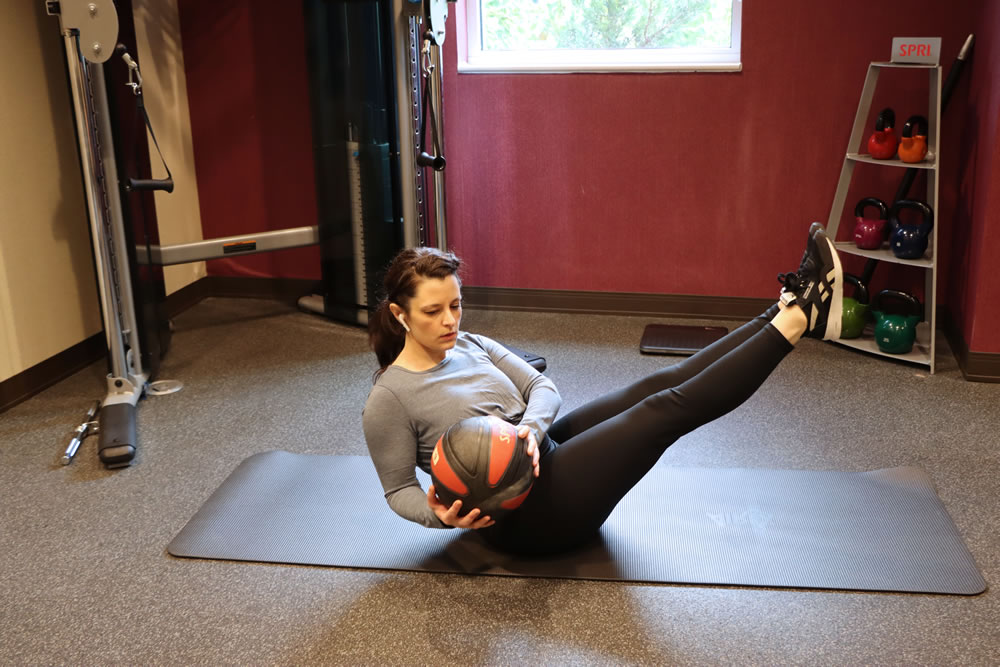
5. Work Out Whenever and Wherever is Best For You
I enjoy working out later in the day. But if you don’t have time in the afternoons or evenings, try waking up a little earlier to get in a half-hour walk or short strength training session to check it off your list first thing in the morning.
Some studies show that the morning is best for burning fat, but exercise performance may be better later in the day, which can help build strength and increase endurance. A more recent study has revealed evidence that the best time to exercise may be different for men and women. [19]
Ultimately, the best time to work out is when you make the time.
And whether you prefer the gym, the comfort of your own home, or the great outdoors, it doesn’t matter as long as you get moving.
6. Start Out Slowly Easy and Focus on Form
You’re excited to get back in shape, I get it. But going beast mode after loving life on the couch for the last several months isn’t the best idea. As a beginner, it’s best to start slowly and then ramp up the activity.
If you do too much activity too quickly after being sedentary, that initial DOMS (delayed onset muscle soreness) can be a bit much and may discourage you from continuing.
Instead, stick with beginner-friendly workouts and then increase difficulty after a few weeks. Fitness magazines are great resources to learn from and you can check out tons of free beginner exercise videos on YouTube.
If you’re not sure where to start or what exercises you should do for your fitness level, consult with a fitness coach for advice on what would be appropriate.
Below I’ll tell you why getting a fitness coach through an app like Future is a game-changer that can make getting in shape and exercising again stress-free.
7. Choose Forms of Exercise That You Find Fun
If you really want to get in shape, you have to do workouts that are challenging, but you also have to be consistent. Throwing a workout once every couple of weeks won’t cut it.
So if cardio on the treadmill sound less than stellar, skip it and get yourself moving in a way you enjoy so you’ll stay motivated to keep going.
Start walking at the beach or park. Take hikes, cycle, rock climb, swim, surf, kayak, roller skate, ice-skate or ski. Take a yoga, pilates, kickboxing, or dance fitness class. If you’re competitive, try joining a local sports league or club. If you’re into gaming, fire up a fitness game like Just Dance or Fitness Boxing.

8. The Perfect Way to Get Started With Exercise….Walk
Easy to do anytime, low-impact, and free walking can improve bone strength, build muscular endurance, reduce stress hormones, improve cardiovascular fitness and burn calories. [20]
And studies continue to show walking consistently is super effective for gradual and sustained fat loss. [ 21]
A recent study by the National Institutes of Health followed over 6,000 patients for four years. They found that the magic number to prevent weight gain was walking at least 8,600 steps. [22]
Aim for 7000-10,000 steps per day or walk briskly for 30 minutes five times a week. To get the most benefits, you’ll want to get your heart rate up exerting yourself at a moderate intensity. You should be slightly breathless but still be able to hold a conversation.

9. Get Some Wearable Tech
To help keep track of your steps get a simple pedometer or download a step-tracking app on your phone. The only issue with a phone app is that you will have to carry your phone at all times.
Consider getting a fitness watch and activity tracker. Features vary from model to model. They all track your steps, but most will also track your heart rate, distance traveled, calories burned, time standing, and minutes spent exercising.
Some even have built-in training and recovery programs that allow you to track your fitness goals as well.
Activity trackers on Amazon start around $40 on the low end. The Amazon Halo is currently $79.99 while fitness watches popular from brands like Amazfit, Samsung Galaxy, FitBit and Apple Watch will be a bit of an investment running you a couple hundred and up.
But if you’re serious about making exercise a part of your lifestyle these watches can be an invaluable motivational tool that can help you keep track of your progress. I have one and it’s definitely worth it.
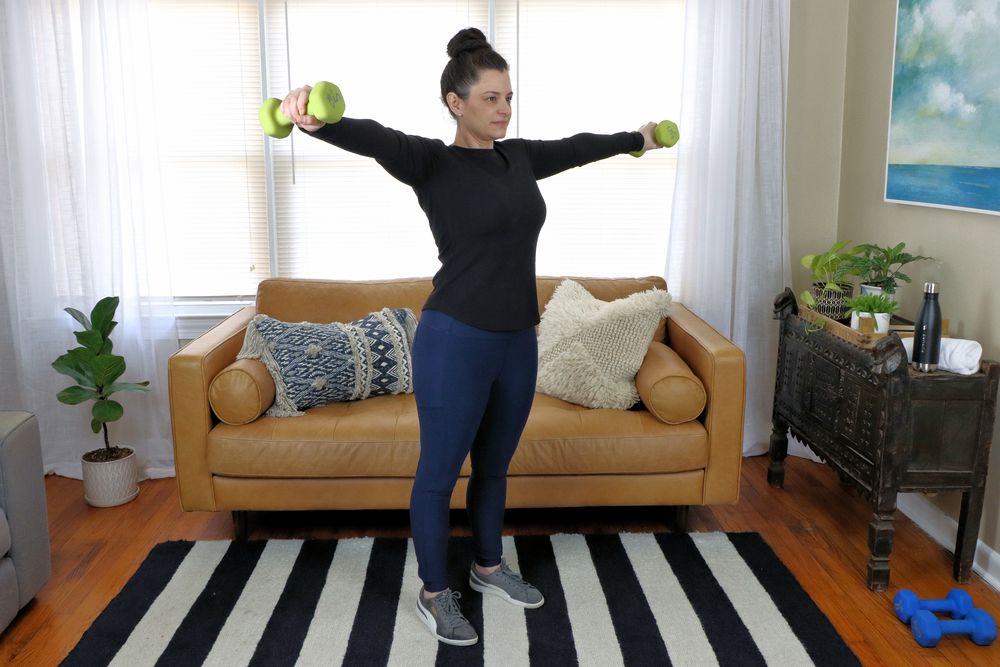
10. Incorporate Strength Training Twice a Week
Once you’re feeling a little more confident, start adding in strength and resistance training.
Strength training can help balance sugar, improve sleep quality and build bone density, but it also helps you build muscle and increase your metabolism. And the more muscle we have, the more calories we burn.
For strength training, you can use weights like dumbbells and kettlebells and machines at the gym.
If you’re working out at home and have little space, resistance bands are inexpensive, great for building strength, and can be tucked in a drawer.
Resistance and strength training exercises include:
- Squats
- Push-ups
- Plank variations
- Deadlifts
- Lunges
- Glute-bridges
- Bicep curls
- Tricep-extensions
When using weights, kettlebells, resistance bands, or machines, start with a lighter weight amount, where you can complete one set of 10 to 12 repetitions of each exercise. It should be challenging, but not straining or painful. By the end of the set, feel ready for a break.
Then rest for 30- 60 seconds between exercises.
You can start with one set the first and second week, eventually building up to three sets of 10-12 reps.
Aim to incorporate strength training at least twice a week, training different muscle groups on different days. And be sure to include rest days in between training sessions.
If you don’t enjoy working with weights, try taking up pilates or yoga, which both use bodyweight exercises and poses to increase strength and balance.
11. Break Up Workouts Into Mini Sessions
Think you need a long block of time in to get the benefits of exercise? Not true.
Studies show that mini-workouts throughout the day can be just as effective as longer workouts. [23]
Mini workouts:
- Are great if you’re short on time
- Can get us used to high-intensity exercises
- Are great if you get bored easily
Exercising in 10-minute blocks is also a great way to ease your body and mind back into a routine.
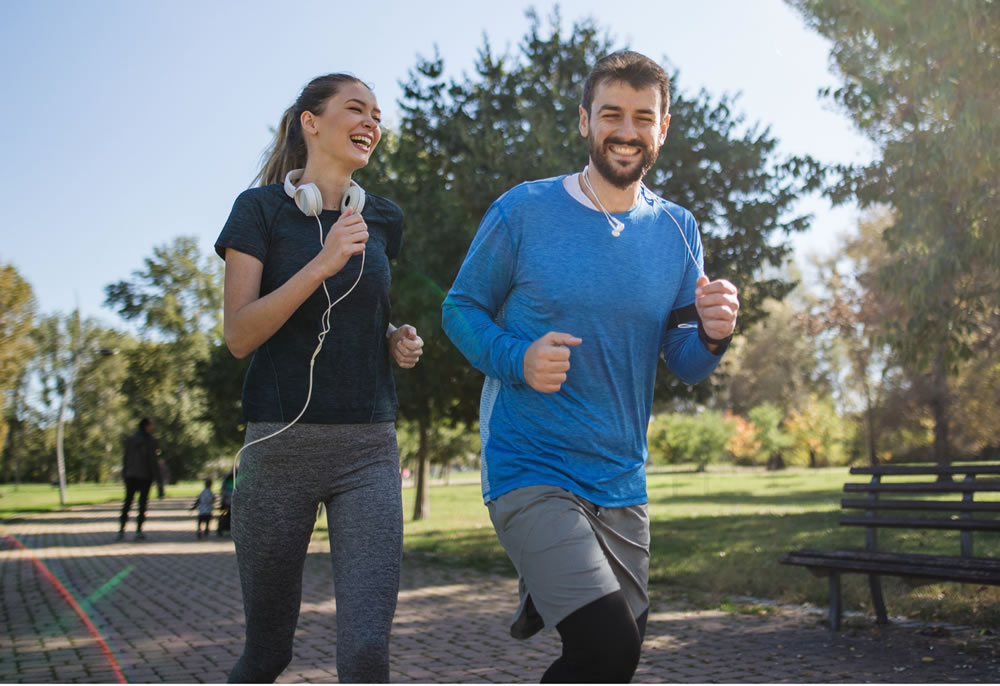
12. Get a Great Playlist
On days when you’re not in the mood to work out and can use a little extra motivation, pop in those earbuds and turn on some high-energy tunes to get you moving. It can make all the difference.
Studies show that when you play high-energy music with faster beats (that you enjoy), you’ll exercise harder and longer without feeling like you’ve put in any extra effort. [24]
It totally works for me!
As an alternative to music, listen to an audiobook or to an episode of your favorite podcast on days when wanting something a little different.

13. Make Gradual Changes to Your Diet
Whether your goal is to get leaner, build more muscle, or increase your overall physical fitness, your diet will still play a big role in your results.
Extreme diets are a recipe for failure and can leave you too weak to exercise. But making small healthy changes over time can lead to big gains in the future.
Here are a few easy diet tips to incorporate into your routine once you start exercising:
Prioritize lean protein: Protein helps us build more muscle, but it’s also highly satiating. Studies show that when we eat protein-rich meals, we’re less likely to snack later on. And for every 100 calories from protein you eat, your body will use 20-30 of those calories to digest and absorb the protein.
Avoid sugary drinks and treats: Sugar can be addictive and adds empty calories to our diet that contribute to weight gain. Try cutting back a little each week or replace sugar with calorie-free substitutes like stevia, erythritol, allulose, or monk fruit. Remember, even “natural” sweeteners like honey, agave syrup, and maple syrup are still sugar.
Drink more water: Often when we think we’re hungry, we’re actually dehydrated. Water can increase calorie burn and fat in the body, but it’s also a natural appetite suppressant. Drinking water can also help reduce fatigue during workouts and reduce the amount of calorie-laden beverages you might reach for during the day.
Watch Out For Condiments and Dressings: Calories can add up in creamy and oil-laden salad dressings, ketchup which often has added sugar, and mayo which will add an extra 100 calories per tablespoon to your meal. Opt for a squeeze of lemon or try subbing Greek yogurt for mayo.
Avoid Processed Foods and Check Your Portions: Processed foods like cookies, donuts, chips, and crackers can spike blood sugar and are high in calories without offering much nutrition to your body. Check labels and consider getting a kitchen scale. This low-cost tool can help you gauge the calorie density of foods compared to their serving size.
Eat the Rainbow: Incorporate more fruits and veggies into your diet. Fill half your plate with veggies, ¼ with protein, and ¼ with whole grains or legumes. Add a small amount of healthy fat, like olive oil or avocado, to help keep you satiated and to promote healthy hormones.

14. Move Throughout the Day to Increase Your NEAT
If fat loss is one of your goals, you’ll need to burn more calories during the day than you consume. And exercising a few times a week won’t cut it.
So how do burn more calories on days when you’re not getting in an official workout? It’s easy: focus on your non-exercise activity thermogenesis or NEAT for short.
NEAT accounts for all the calories you burn while doing activities during the day that don’t include eating, exercising, and sleeping.
That means taking the stairs, walking the dog, grocery shopping, gardening, cleaning the garage, waxing the car, doing laundry, organizing the closet, and washing the dishes are all NEAT activities.
And the calories add up!
Each person will burn a different amount of calories depending on their size, age, weight, and overall activity. If you want an idea of how many calories you’re burning throughout the day through NEAT, it may be a good idea to invest in a fitness watch.
15. Vary Your Workouts and Their Intensity
If you’re doing the same workouts all the time, your body will eventually adapt and you’ll plateau in progress.
To keep progressing, create a workout schedule that varies intensity levels, lengths of training sessions, and exercise styles.
For example, if you’ve been walking or doing steady-state cardio (one pace), add in a HIIT (high-intensity interval) session twice a week.
HIIT alternates short periods of rest or easy movement with high-energy blocks of exercise. It can also combine a variety of exercises.
Here’s what that walking workout would look like for 30 minutes:
Step 1 – Warm up for 5 minutes
Step 2 – Walk for 1 minute
Step 3 – Walk fast-paced or jog for 30 seconds
Step 4 – REPEAT steps 1 & 2
When you’re ready, do two to three HIIT workouts per week with at least 24 hours of recovery between sessions.
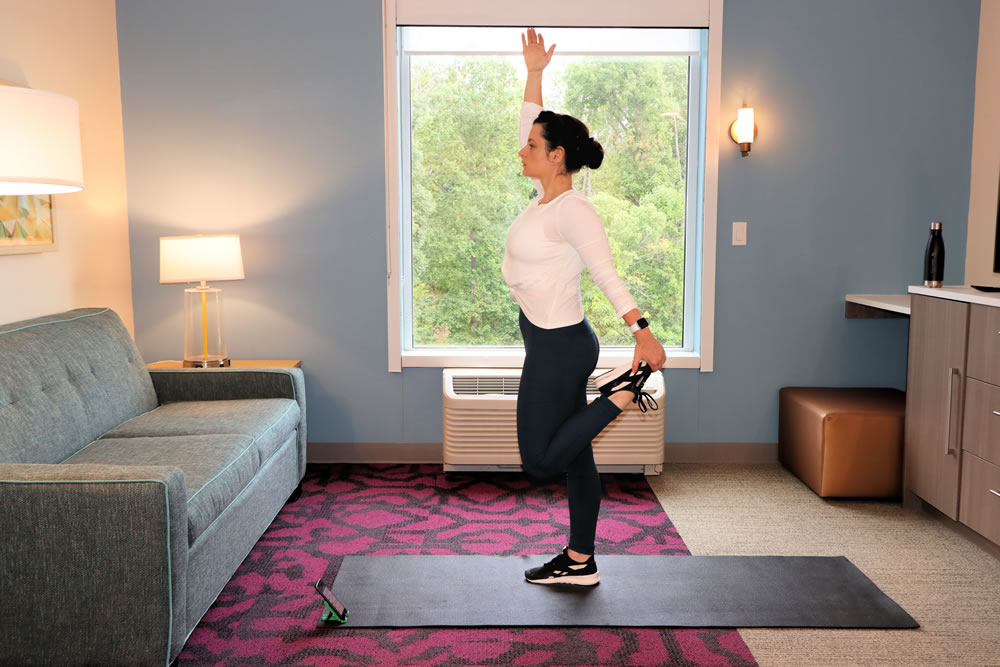
16. Don’t Forget to Warm Up, Cool Down, and Stretch
Warming up your muscles before your exercise can help prepare muscles for your workout while helping you avoid injury.
Cooling down and stretching after a workout can help bring down your heart rate while giving muscles a chance to recover after exercise.
Always be gentle with yourself when stretching. If a range of movement hurts, ease up. Stretching should feel good and never be painful.
17. Get Some Help From a Fitness Pro
Starting up an exercise program again can be overwhelming at first. Especially if you’re a beginner. But if you’re committed to finally getting fit once and for all, or you have specific goals you want to achieve, consider getting help from a fitness trainer.
Taking the stress and frustration out of getting fit, a trainer will use their experience to design a workout and fitness program unique to your goals, lifestyle, and fitness level.
A fitness coach can:
- Give you exercises appropriate for your fitness level
- Teach you to perfect your form so you’re hitting the right muscles and avoiding injury
- Encourage, support, and motivate you!
- Help you overcome plateaus
- Give you nutrition advice
You can find a trainer at your local fitness club or gym and sessions are usually sold in packages. Having multiple sessions is ideal if you have long-term fitness goals.
But what if you hate the gym? Or you’re short on time?
For something more flexible and much more affordable, try an online platform like Future.

Future is a unique personal training and fitness coaching app in the Apple Store designed on the science of what motivates us to stay on track with our exercise and fitness goals.
Once you sign up with Future, you’ll get paired with your own remote elite personal fitness coach.
After a meet and greet on FaceTime, they’ll make you workouts updated weekly that is based 100% on how and where you like to exercise, your goals, and your fitness level.

What makes Future more unique than other apps and online programs, though, is that your coach will be there to keep you accountable. How?
They’ll message you every day with check-ins, tips, and friendly feedback before and after your workouts. It’s like having a friend who also happens to know the ins and outs of what you need to do to get fit.
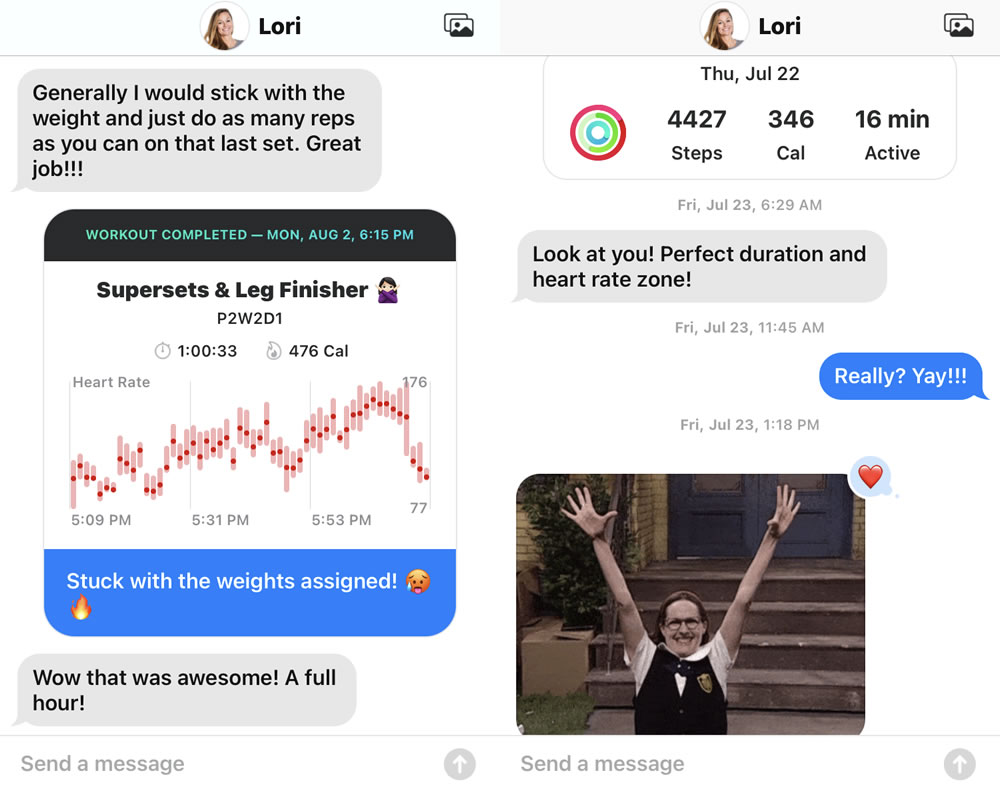
Just like having a trainer in your pocket, Future fitness coaches are elite-level fitness pros and over 80% have trained pro, Olympic, and collegiate athletes:
Plus, your coach will also:
- Take the guesswork out of getting fit and make it easy to start exercising again
- Message you daily through the app to help keep you motivated and accountable
- Help you kick excuses to the curb
- Will give you fitness and nutrition advice anytime you need it.
- Update your workouts every week so you’re never bored.
- Will help boost your confidence.
- Are there to help you reach your goals and even celebrate your achievements!
I love using the Future app because the workouts:
- Are ready to go with audio and video instruction in the app.
- Only include exercises and activities you like to do and nothing you don’t
- Are more challenging than what you would do on your own so you see results.
- Don’t require any fancy equipment
- Can be done anywhere: the gym, at home, outdoors, or even while traveling!
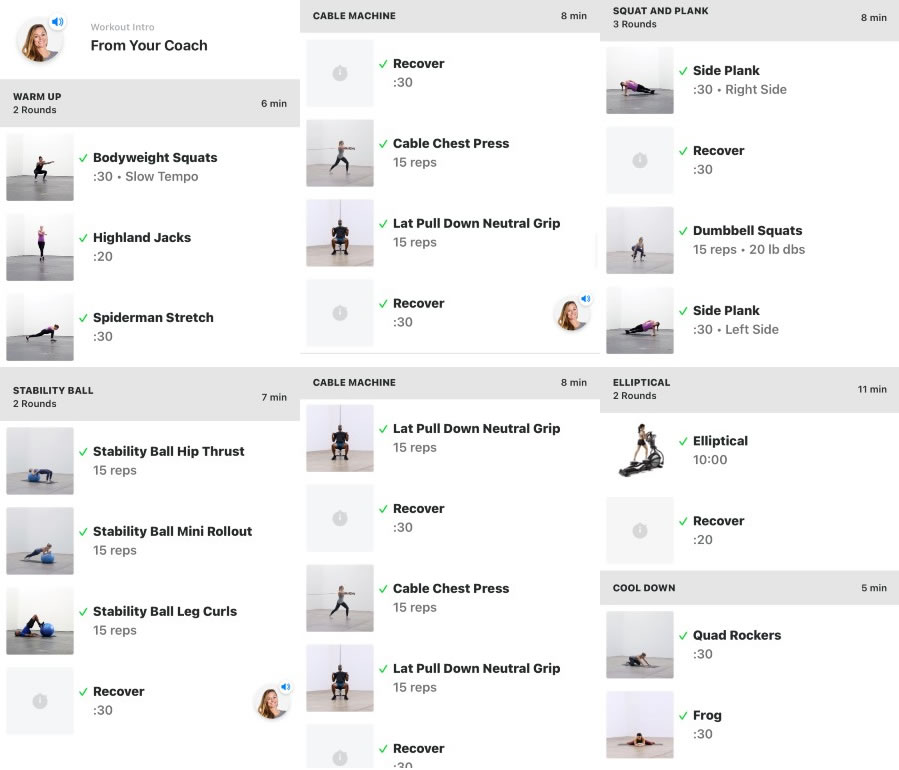
If you have a hard time sticking with an exercise routine and staying motivated, or you haven’t seen results in the past working out on your own definitely give Future app a try.
➡ Read our in-depth Future app review here.
It’s the single most effective thing I’ve tried that has helped me stick with a fitness routine and finally make exercise a habit.
And now I kind of love working out. Who knew?

Ready To Start Exercising Again, But Need Help?
As reader of Better Living, join Future today with these exclusive discount codes.
➡ Get your 1st month of Future for only $19
➡ Get 50% off your first 3 months!
Plus, Future offers a 30-day risk-free trial. So, pick your coach and start your fitness journey now!
Further Reading
➡ See how to stay motivated to exercise
➡ See the benefits of online fitness training
➡ See how to lose the last 10 pounds fast
➡ See how to get fit at home for beginners



